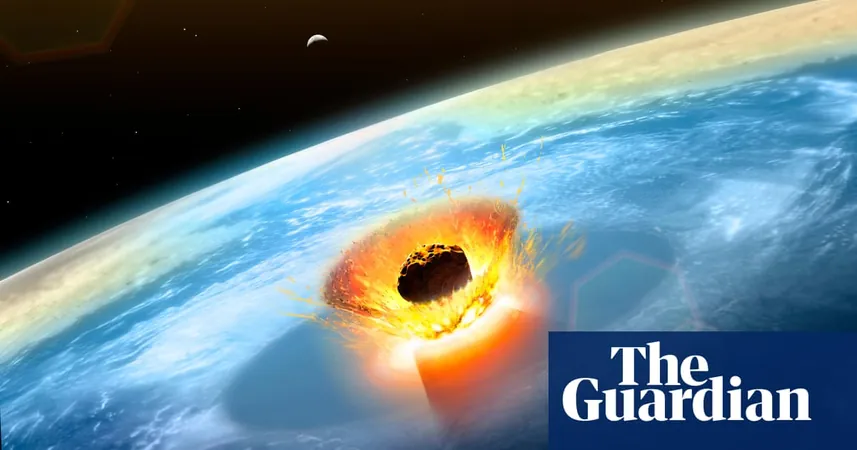
Shocking Discovery: Dinosaurs May Have Faced Multiple Asteroid Strikes!
2024-10-03
Shocking Discovery: Dinosaurs May Have Faced Multiple Asteroid Strikes!
In a groundbreaking revelation, researchers are now suggesting that the infamous asteroid that led to the extinction of the dinosaurs 66 million years ago was part of a larger cosmic drama. Recent detailed scans of an underwater crater off the coast of Guinea, West Africa, indicate that another massive asteroid impacted Earth around the same time, during the tumultuous end of the Cretaceous period.
This second asteroid event, believed to have occurred between 65 million and 67 million years ago, created a crater that spans over five miles in diameter. According to scientists, this asteroid measured around a quarter of a mile wide and struck Earth at an incredible speed of nearly 45,000 mph. Although smaller than the asteroid that triggered the mass extinction event, its impact was powerful enough to leave lasting scars on our planet.
Dr. Uisdean Nicholson, a marine geologist at Heriot-Watt University in Edinburgh who initially discovered the Nadir crater in 2022, emphasizes the significance of these findings. 'The new images paint a picture of the catastrophic event,' he stated. Earlier, the specifics surrounding the impact remained murky.
In order to gain deeper insights into this colossal event, the research team utilized advanced 3D seismic imaging techniques to map the crater's rim and geological markings located 300 meters beneath the ocean's floor. 'There are around 20 confirmed marine craters worldwide, and none of them has been captured in anything close to this level of detail,' Nicholson noted, describing the findings as 'exquisite.'
The implications of this second collision are staggering. It appears to have triggered intense tremors that liquefied sediments beneath the ocean floor, resulting in the formation of faults deep below the seabed. Additionally, the impact may have set off massive landslides and generated a tsunami more than 800 meters high, potentially devastating coastal regions across the Atlantic.
Although researchers are still trying to determine the exact timing of the asteroid's impact, the discovery and its estimated age have sparked speculation that it could be part of a series of cosmic bombardments during the end of the Cretaceous period. Comparatively, the asteroid associated with the dinosaurs' extinction was significantly larger, leaving a crater 100 miles wide in what is now the Chicxulub region of Mexico's Yucatan Peninsula.
Dr. Nicholson drew parallels between this discovery and significant past events, stating, 'The closest humans have come to seeing something like this is the 1908 Tunguska event, when a 50-meter asteroid entered Earth’s atmosphere and exploded over Siberia.' The newly acquired 3D seismic data from the Nadir crater presents an unprecedented opportunity for scientists to test various impact crater theories, refine models of crater formation in marine environments, and better understand the far-reaching consequences of such catastrophic events in Earth's history.
Stay tuned for more Earth-shaking revelations from the world of science! Could there be more hidden cosmic dangers lurking in space?



 Brasil (PT)
Brasil (PT)
 Canada (EN)
Canada (EN)
 Chile (ES)
Chile (ES)
 España (ES)
España (ES)
 France (FR)
France (FR)
 Hong Kong (EN)
Hong Kong (EN)
 Italia (IT)
Italia (IT)
 日本 (JA)
日本 (JA)
 Magyarország (HU)
Magyarország (HU)
 Norge (NO)
Norge (NO)
 Polska (PL)
Polska (PL)
 Schweiz (DE)
Schweiz (DE)
 Singapore (EN)
Singapore (EN)
 Sverige (SV)
Sverige (SV)
 Suomi (FI)
Suomi (FI)
 Türkiye (TR)
Türkiye (TR)